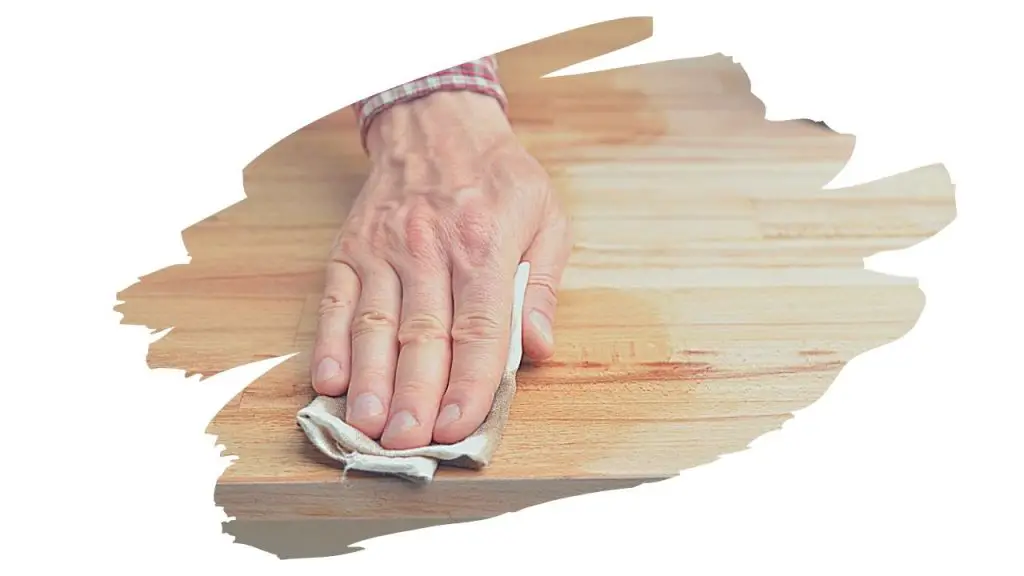Let’s set the scene…
You’ve just completed your work piece and you’ve given it a gorgeous looking coat of Danish oil. However, you’re scratching your chin about what to do next.
You’ve heard all about how important it is to seal wood properly. And so now you’re asking yourself; should I apply water based polyurethane over danish oil?
Yes, you can put a water-based polyurethane coat over Danish Oil. It shouldn’t be a problem getting the poly to adhere to the finish (provided you’ve waited for the Danish oil coat to fully cure).

This post may contain affiliate links to products that we receive a commission for (at no additional cost to you). Learn more here.
How Long Does Danish Oil Take To Cure?
Danish oil takes anywhere between 24 to 48 hours to cure. However, it can take several days for a Danish oil finish coat to cure if you’ve applied multiple coats. It can also take longer to cure if the wood piece happens to be drying in cool and/or damp conditions.
It is worth noting that pure oil alone doesn’t actually cure into a hard resin. If you simply applied nothing but natural oil to the surface of wood, it wouldn’t turn into a solid film.
The process of ‘curing’ involves a chemical reaction that turns a liquid solution into a hard solid. This is what happens with, say, a varnish solution.
Most modern Danish Oil finishes are a blend of linseed or tung oil plus varnish, (with roughly a third of the finish being made up of varnish).
And it is that blend that allows Danish oil to fully cure into a hard film.
Does Danish Oil Even Need A Top Coat?
It depends. Any frequently used wooden furniture, (such as bedside tables and chairs), will become dull and worn before their time. In these instances, adding an extra hard-wearing top coat is a good idea.
Whereas work pieces that are handled infrequently, (such as wooden clocks and carved ornaments), don’t need additional protective coats.
Now, having said all that, most over-the-counter Danish oils are designed to be a complete finish solution. In other words, they don’t require a top coat.
Are you still unsure about using Danish oil on your woodwork piece? Click here to learn all of the pros and cons of this popular wood finish, ‘Danish Oil: Advantages an Disadvantages’.
Should I Use Oil Or A Water-Based Polyurethane On Danish Oil?
When it comes down to pure looks over substance, oil-based polyurethane stands out head and shoulders over its water-based counterpart.
However, water-based polyurethane dries faster, saving you a lot of time if you are working on a large project.
Let’s take a quick run through of the pros and cons of each one:
Oil-Based Polyurethane
Pros:
- This makes wood look richer and gives natural wood a deeper more rustic shine.
- Less expensive than water based polyurethane.
- Requires very little touching up work once the jobs done.
Cons:
- They take 4 times longer to dry than their water-based counterparts.
- It will begin to darken into ever deepening amber tones.
- Get ready to whiff it up with this finish. Oil-based polyurethane gives off way more fumes than water-based solutions (thanks to their higher VOC content).
What does VOC content mean? VOC (Volatile Organic Compounds) refers to the fumes a solvent releases into the air as it dries.
Water-Based Polyurethane
Pros:
- It dries so much faster than the oil-based version.
- And because it dries faster you can apply multiple coats without having to wait around all day.
- It is more durable since it uses an acrylic resin base (and not an oil base).
Cons:
- They look duller and they sap the wood of its vibrancy.
- These poly’s are much more expensive than oil-based ones.
- It requires more upkeep and maintenance than oil-based poly.
Can You Mix Oil Based And Water Based Polyurethane?
Oil and water do not mix. As a result, oil-based and water-based polyurethane do not blend.
Now, you are probably wondering; ‘If oil and water do not mix, how does water-based poly work on a Danish oil finish?’.
The answer is simple; after Danish oil is cured, water-based poly can adhere to it.
On the other hand, if you were to apply the polyurethane before the danish oil finish has time to cure, it wouldn’t stay on.
How Can You Tell If Polyurethane Is Oil Or Water Based?
Easiest way to tell oil-based from water-based is to simply look at the label.
Okay, so that was a bit of a tongue in cheek answer… but its true! Just scan the label, and you’ll be fine.
However, if you want to double check, simply open up the can and take a look inside. Water-based polyurethane will look milky when inside the can (even though it brushes on clear).
How Many Coats of Water Based Polyurethane Should I Use?
A minimum of 3 to 4 coats is a good start for basic protection.
After that, how many more coats you add is up to you. Still putting on some extra ‘maintenance’ coats, (every few years as a touch up), isn’t a bad idea either.
Final Thoughts
Applying a water-based polyurethane coat onto a Danish oil finish is perfectly fine. And it is a great way to give your woodwork project long-lasting protection from everyday wear and tear.
Just be sure you wait it out and give the oil finish time to dry and become fully cured. After which, you are good to go!



